During this month of April and celebrated “landscape architecture month”, let us introduce you to April Philips, a landscape architect and urban sustainability advisor and the principal and owner of April Philips Design Works in San Rafael, California. She is the author of the recently published Designing Urban Agriculture: A Complete Guide to the Planning, Design, Construction, Maintenance and Management of Edible Landscapes. April’s work spans a wide range of project types, but one of her main focuses is creating successful urban farm systems. This interview highlights April’s efforts in bringing urban edible landscapes, systems thinking, and community outreach to the forefront of the landscape architecture discourse.
You are originally from Louisiana but have spent most of your professional life in California. How has this shaped your design thinking?
I like to think that my design thinking has been shaped by the 3 great cities that I have had both roots to and connections to throughout my life – New Orleans, Boston and San Francisco. All of these cities have fascinating and rich cultural and regional landscapes which are steeped in history, narrative layers, specific local ecologies, diverse communities, and a land-people dynamic with water that is to me a biological pull.
I am also a true believer in “essence” or “atmosphere” which I think is from my southern heritage. The distinct mix of humidity, spicy food, jazz music, and musty decay juxtaposed with the new, and its special flora and fauna say “New Orleans” to me in a way that speaks to how I design and how I think about placemaking. Every place should evoke its own atmosphere to the people who will visit it – it could be just to feel comfortable or it could be more than that. I believe that each site talks to us in its own unique way and there are stories of place that the design needs to tap into and explore to find the one that celebrates its own distinct voice.
In some ways, I see designers like being a chef creating a new gumbo – what local ingredients do I have to draw from? What ones do I add for a new twist? What is the key flavor to highlight for this one? Designers do the same thing, just with different ingredients from the earth, air, fire and water.
Being a native of New Orleans and having experience with infill projects, do you have any suggestions for green infrastructure in post-Katrina New Orleans?
Community-based design and dialogue is important in that there is an inherent resistance to outsiders and new ways of doing things in the south. I think the best way to illuminate green infrastructure’s results is to do urban infill projects and let people see the success that would be derived from them. The Infill projects that tie green infrastructure improvements to benefit the local community and local economy will have the best chance of success.
In New Orleans, people are tied to their homes and their heritage in a land-people dynamic that is important to acknowledge. A large scale infill or infrastructure planning project has an uphill battle if it does not take that into consideration. I think small scale successes and innovations can eventually turn this around. The Viet Village project in New Orleans is an example of a project that could do so much if it could find more support and get the politics out of the way.
Viet Village
The book that you recently published focuses on edible landscapes and creating urban farms. What are some of the community outreach processes that must be realized in order for an urban farm to take shape?
First, a few underlying framework items and policies need to be set in place to facilitate urban agriculture within a community. These include understanding how urban agriculture has the potential to shape the physical framework of a community’s daily life. When scale is allowed to be multi-faceted, a system-wide interdependent approach can be intertwined into the existing framework, and zoning should be allowed to be flexible enough to foster new system connections that were not previously envisioned. Urban agriculture can shape streetscapes, neighborhood gathering and circulation, create cultural landscape identity, and provide multigenerational aspects that were not previously planned for or available to a community. Community outreach can begin with this type of advocacy with local politicians to make sure urban agriculture is part of the city and neighborhood plan.
Another consideration is that social and health and well-being metrics are needed that acknowledge the many aspects of food and agriculture that are central to fostering health and happiness in our lives. Food is central to human biology, sociology, and psychology. Everyone needs food to survive, enjoys food as nourishment and celebration, and are connected to others by food as we celebrate or gather for a meal. Food can become a platform or layer from which we address other important elements of community, ecology, and livability including the physical, social, economic, cultural, and environmental health of the city. Food is the gateway to the stakeholder conversations between city, community and project developer or funder.
As far as community outreach for a specific design project goes, the key is to establish a communications and management framework that facilitates collaborative conversations and in following a more cyclic design process from the start. This is what I call in the book the Urban Ag Design Process Spheres, which seeks to harness a lifecycle approach and the creation of an integrated systems framework that considers how to build regenerative capabilities into the system, strives for achieving resiliency, and endeavors to achieve a sustainable lifecycle approach that adds value to the ecological, economic and social benefits of the community. This is a systems thinking-based process that is dynamic because landscape ecologies and people’s relationships to them are dynamic. The stakeholder and visioning stage is a key first step in the design process. If a community feels ownership and is a partner in the creative process for building a sustainable food system this will provide the seed for success as the project evolves. Determining how the farm will be funded and operated is part of the upfront dialogue with the stakeholders.
In the process spheres, one is actually called the “Outreach Sphere”. It is the lifecycle link to the design and planning process of urban agriculture landscapes. Designing and constructing these landscapes is perhaps the easiest part to do in the process. This sphere consists of funding, marketing, education, stewardship, research, policy and advocacy – thus coming full circle for ensuring the foundation for a sustainable food system before and after a project. It is this ongoing cyclical process that needs to replace our more linear-based process of modus operandi in the world of development.
Please divulge some of your favorite “ecodestinations” and case studies that you describe in your book…
There are over thirty case studies in the book that are discussed in detail. Some of my favorites are the local farm-to-table ones that I got to experience firsthand, such as Bar Agricole, a restaurant in San Francisco, and the Medlock Ames Wine Tasting Room garden in Healdsburg, CA. Both of these engage people with edible landscapes in a multi-sensory fashion. That said, all of the case studies in the book demonstrate a tremendous range of where urban agriculture is headed and how designers are shaping these landscapes, small and large scale, in their communities around the world.
The Atlanta Botanical Garden’s new Edible Garden addition is one at the top of my list to see soon. The combination of using edible plants in a visual appealing way to demonstrate that edibles can be beautiful as well as functional is a stunning and quite imaginative example of how designers can integrate edible plants in all of their projects. Riverpark Farm in Manhattan is an edible landscape that pushes the envelope on both the design and community interface. Who knew that “temporary” could look so cool? And an exciting one for my office will be the completion this fall of our 2001 Market Street project in San Francisco, a high-density mixed-use project with Whole Foods as the anchor where we have designed a community garden and a beneficial habitat garden on the green roofs and integrated edible plants into our streetscape design.
I do hope to visit all of the case study projects in the book that I have not yet had a chance to this year – at least the ones in the U.S. but for sure Villa Augustus in the Netherlands is a hotel destination that I have on my must-see wish list, as is Expo 2015 in Milan which will focus on the theme of “feeding the planet” and looks to be like a very inspirational event.
Bar Agricole
Villa Augustus
Riverpark Farm, NYC
How can landscape architects ensure that they are holding positions in governmental positions that would allow for their initiatives to be realized, or be more involved in the public process?
The majority of humans now live in urban environments. If there was a natural disaster or any kind of event that could shut down a city’s food supply chain, supermarket shelves would be emptied within a few days in most large cities. Thanks to our dependence on the globalized food system most cities and their populace would not be prepared for such emergencies. How would people feed themselves? Would they resort to foraging from the city sidewalks or city parks? How would a city feed itself with the current food system in place which does not foster resiliency? How will a populace that is low in ecoliteracy become more self sufficient? How do we create conditions that allow for each community to feed itself? We are now losing farmland at the rate of more than 1 acre every minute. If farms disappear, food will disappear. What can we do to change this trajectory and focus our direction on a new food system model that will meet all of these challenges?
The need for an ecological food model has never been more needed in our cities than now. There are many bright spots of hope that are shining through and we can all play a part in growing this movement forward. At the grassroots level these new urban agriculture projects, policies, ideas, organizations, and forums have the potential to light a spark and spread out into our urban and peri-urban communities as a growing network of urban agricultural systems and create more impetus for a new food system model. This will not happen overnight and it also requires us to not just buy local food from farmers markets, or design local food and farm projects, or create new urban agriculture policies, but also to cultivate, support and facilitate the lifecycle aspects of this growing movement into a real, sustainable food web – wherever we can.
As designers and planners we need to think of ourselves as change agents and participate at all levels of engagement, not just by designing but by taking a more active role in our local communities but also by advancing systems thinking and establishing a sustainable food system model. My belief is that we all need to become more active engaged citizens of the world. I hope that more landscape architects will play a more public role in the future to further and/or lead these initiatives.
What is your favorite example of a “guerilla garden”?
I recently participated in an “Eat your sidewalk challenge” in San Francisco and wrote about it on our blog. It was a mind blowing visceral experience to feel like I was actually a part of the ecosystem of the city. The day-long event was broken into three parts: Forage, Cook and Discuss. Led by Lain Kerr of Spurse, the group of foragers were tasked with finding ingredients in the surrounding city neighborhood to add to the fresh ingredients for the cook-off challenge later in the day. Spurse calls this the “MacGyver the World” mentality of taking nothing at face value. The experience was definitely enlightening and what at first seemed almost impossible that anything other than dandelions would be found turned into a unique change of perspective on how a person could actually live off the land even in an urban forest when you discover that nature is urban. The simple act of looking for food in the city makes you look at the city differently and feel like you are a natural part of the city’s systems just like the food you find on your journey. The city is indeed a complex ecosystem.
Any advice for future urban agriculture enthusiasts?
Start small and plant a herb or edible garden that you can eat from to explore how it makes you feel to grow and eat your own food. Volunteer at a local community garden. Help a local school grow a food garden or a community start up a garden. Plant edibles in your next streetscape design or your own front yard. Use food as a platform to address design issues. Begin to utilize a systems thinking approach in all your work but especially in designing urban agricultural landscapes and you will be adding to the momentum towards a new more integrative city model. Decide that you, too can invite food back into your own city or town and forge a path towards creating healthier communities and a healthier environment. Think creatively and outside the box about cultivating this intersection of ecology, design and community. And don’t forget to take time to enjoy the fruits of your labor.
View more images from Designing Urban Agriculture
All images courtesy of author and Wiley
Published in Blog

















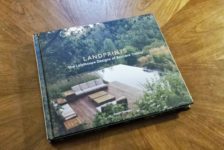
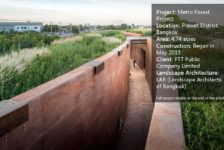
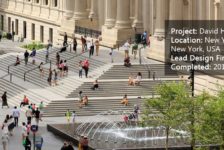
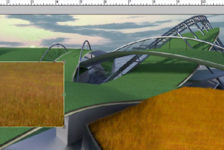
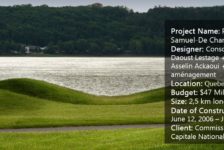
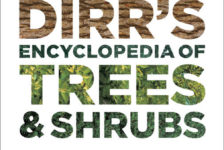
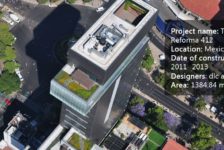
Andres F. Pineda
Great read.
Loved the Bar Agricole. It reminded me of my high school cafeteria, as the herb garden became the provider for the spices and vegetables of our everyday gourmet menu.